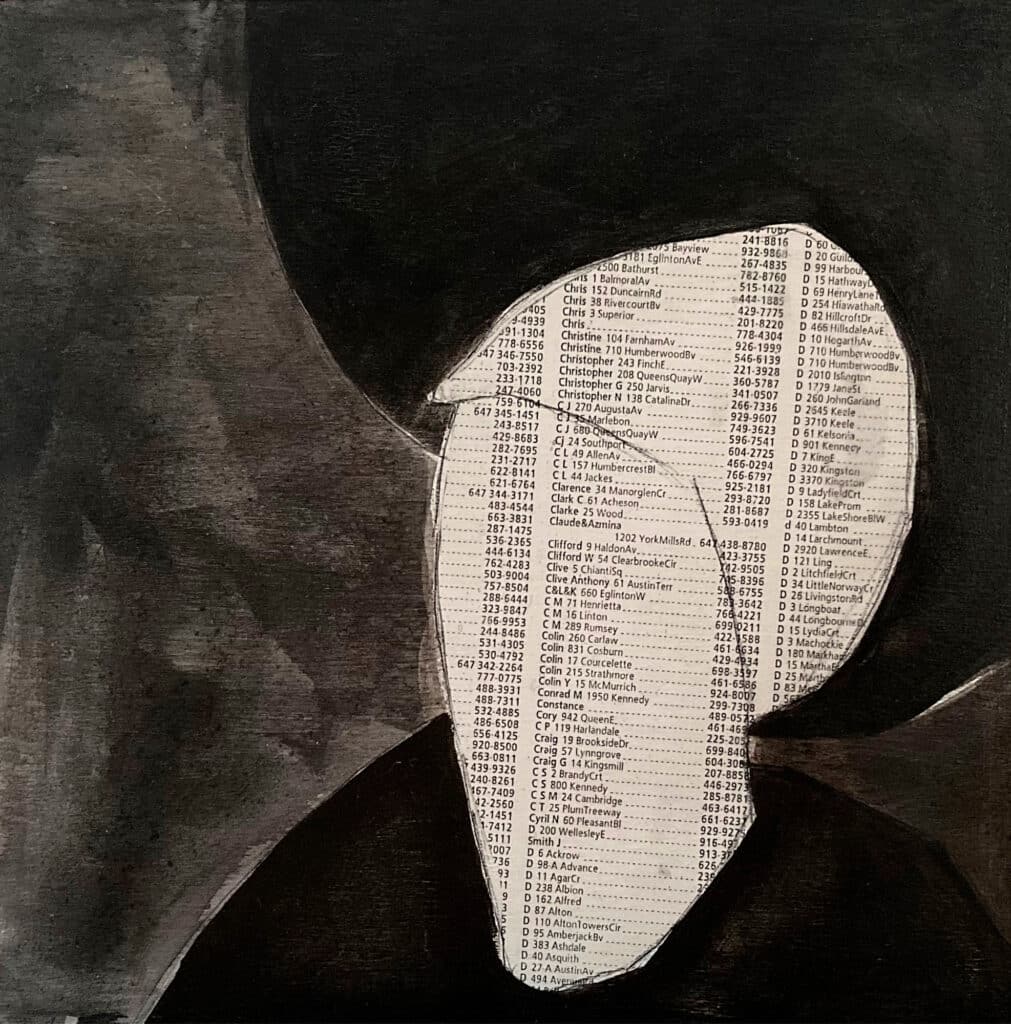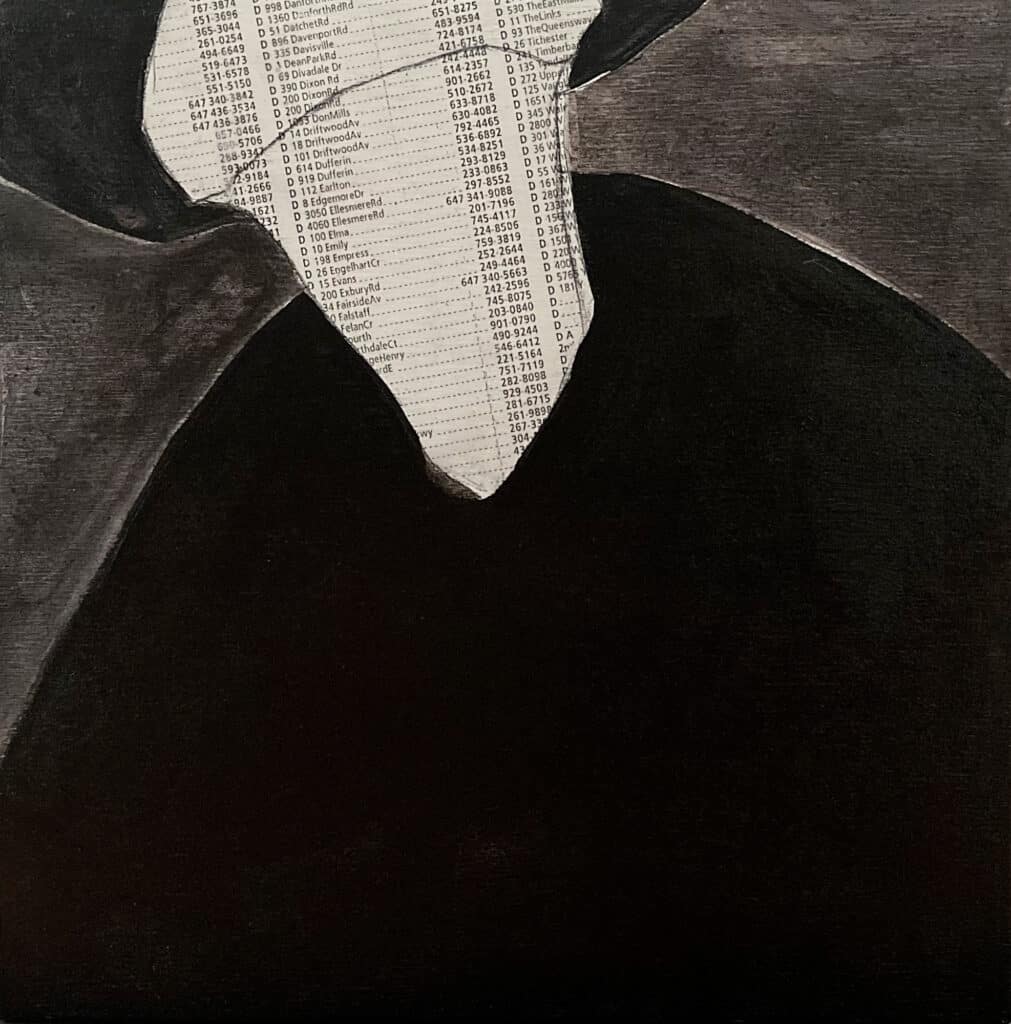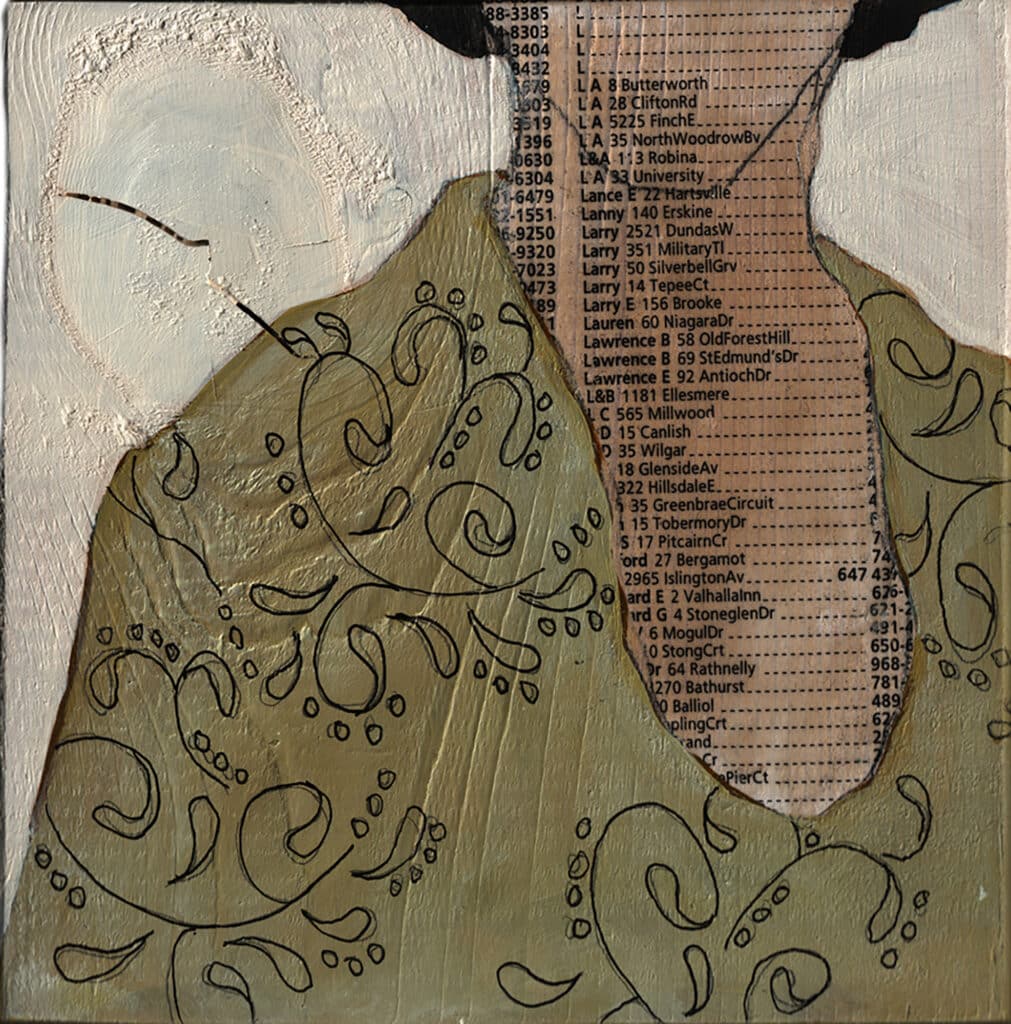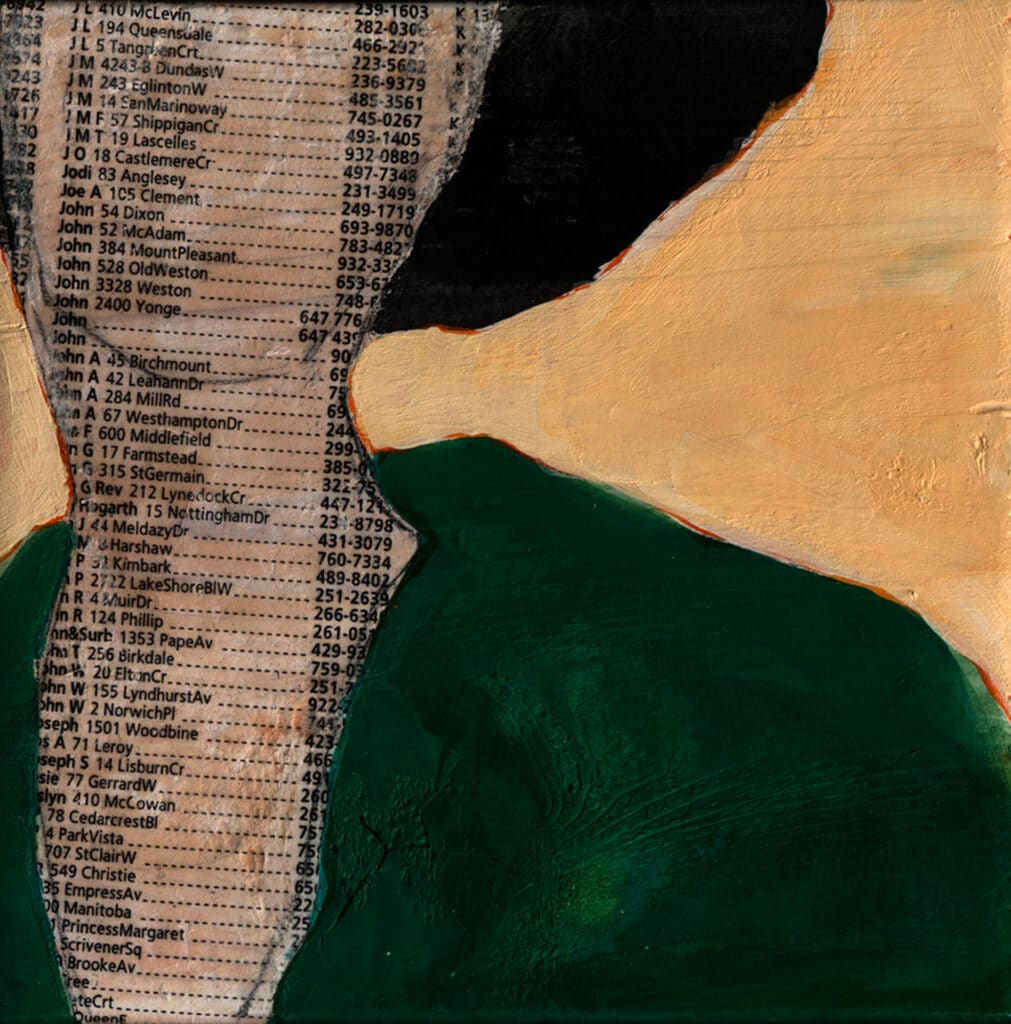Sandra Brewster defines herself as a visual artist, and there is no pretention about it. As she has proved in the past, photography is for her another way of thinking more than seeing—alongside drawing, which she practices to this day and which had earned her a solid reputation in her native Canada as well as in the U.S.
Her drawings, a fusion of wound, irony, and tenderness, are striking in their absolute beauty. As are her photographs which reveal and document her commitment to the community. Community is one of the key words to unlock the allegorical world of this artist who was born in 1973 in Toronto to parents who had immigrated from British Guiana to Canada in the late 1960s.
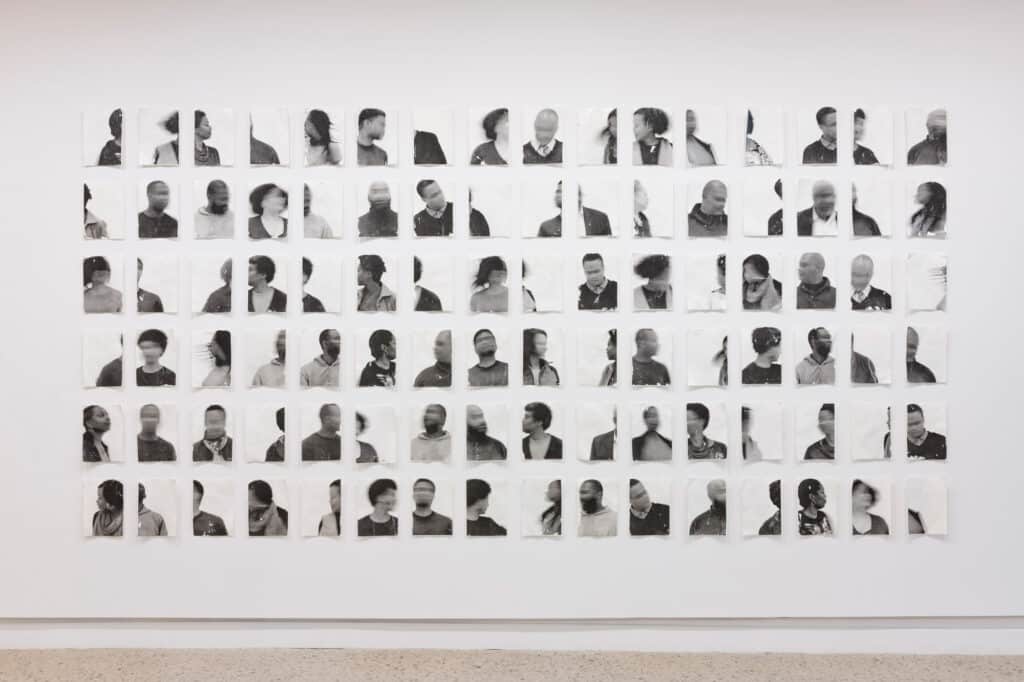
At the Rencontres d’Arles, Sandra Brewster presents a single photograph from her “Blur” series. Printed in very large format, it will be featured as a wall installation. Given the square footage of La Mécanique Générale, a former national railway workshop, one can only wonder: why only one image? As the curator, Gaëlle Morel, explains, a more complete—and above all more representative—proposal was set aside because this exemplary image became the standard-bearer for “A Feminist Avant-Garde of the 1970s”, an XXL exhibition affiliated with La Mécanique. “I think,” Morel told us, “that what matters during this festival is to confront visitors with a powerful image (in terms of size as well as the subject matter and aesthetics—a large, blurred portrait that, unusually, precludes recognition and, instead, symbolizes multiple, changing identities).”
This is a welcome perspective on the part of the curator who is also in charge of a Lee Miller retrospective at the Espace Van Gogh. It is therefore up to the public to be more demanding in order to properly honor this prolific artist.
We chatted with Sandra Brewster via Zoom last April, and told her how, back in 2018, at a fair in Montreal, we were blown away by “Blur”. Courtesy of social networks, we now follow up on her adventures with a preview of her upcoming visit to Arles. Sandra Brewster came prepared to our meeting (and we did too!) with numerous documents: they affirm the aesthetic richness of the artist who continuously questions identity and—beyond the color of the skin or a search for the self—examines the place of Black people in Canada and elsewhere. Her goal: to put an end to invisibility.
Who is the woman whose sole portrait you are featuring at the Rencontres d’Arles?
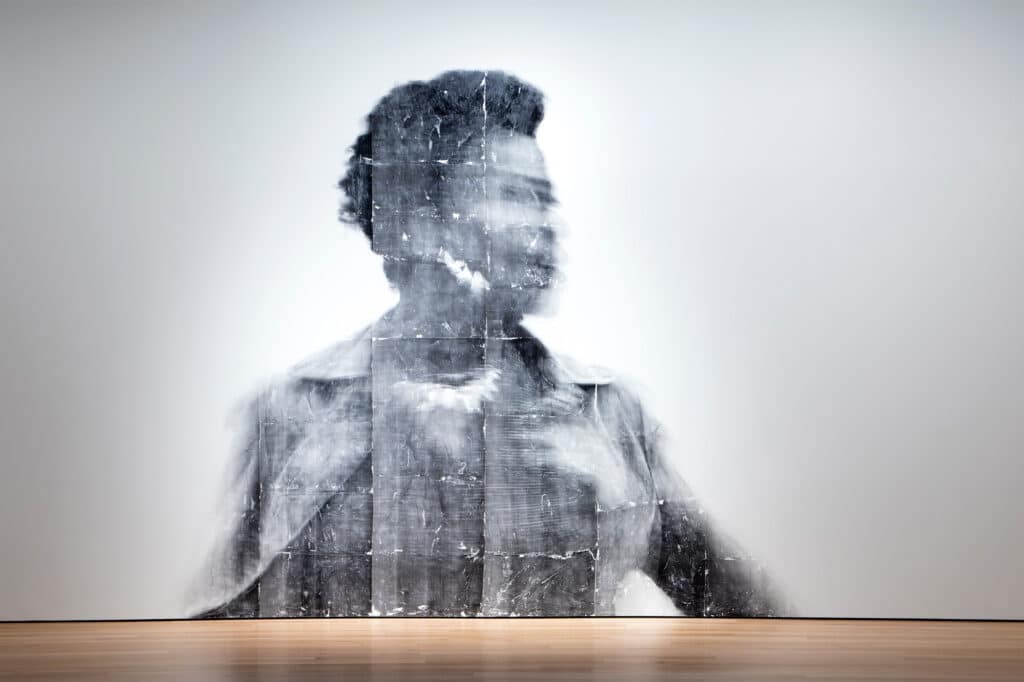
She is one of the people with whom I started “Blur” in 2016. I invited them to my studio and directed their movements in front of my camera. The intention was to represent the underlying idea behind “Blur”, which is an evolving series centered on movement.
Why did you call the series “Blur” rather than Movement?
“Blur” suggests something that won’t stand still. “Blur” includes movement but goes further: the message is that it’s impossible to pinpoint anyone. Movement justifies only movement; it might also be read in the context of migration, but for me it is more than migration. There is no one way to define displacement, as we keep hearing in the media. Through these portraits, I want to understand people’s vulnerability, therefore their individuality, which always fades into the background when we talk about migration. This sort of monolithic perception of communities is very frustrating.
The word “blur” approaches the opacity evoked by Edouard Glissant: being Black and coming from such and such place does not define you.
You exhibited “Blur” in 2017, first at Georgia Scherman Projects (which closed down in October 2021), and then in 2020 at the Art Gallery of Ontario (AGO) in Toronto.
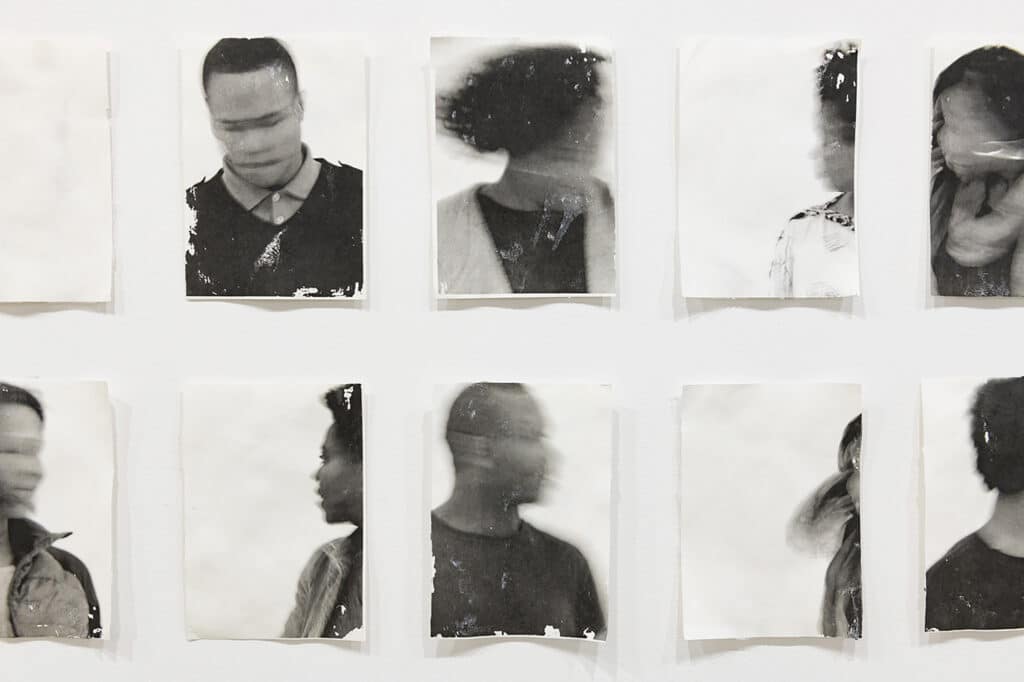
This allowed me to show the evolution of “Blur”, with original portraits, like the one of a musician friend, very well known in her community, along with her family. Salome Bey, her mother, who passed away last year, was the greatest blues singer in Canada. Her father, Howard Matthews, helped open the Underground Railroad Restaurant in 1969, one of the first community restaurants in Toronto, a meeting place for musicians and baseball players. It also commemorates the journey made by African American slaves who came to Canada as refugees from the South.
Was there no slavery in Canada?
There was slavery in Canada but it was considered to be less bad, even non-existent. Canada tends to erase its past. The United States was founded on slavery, whereas Canada not to the same extent. With a vital network of ports, Canada was an active participant in the triangular trade.
Does everyone photographed in “Blur” have a connection to slavery or the slave trade?
There are many activists and children of historical activists. The fact that I’m working on displacement, moving from one place to another, has a lot to do, of course, with my parents who came from British Guiana to Canada. I was looking at old family photos, these fragile shards of memory, and was wondering how my parents anticipated this movement and how they positioned themselves.
Changing places, you say, is not simply changing homes?
That’s right. One’s identity is altered, it thickens because it puts on new layers. “Blur” is a fleeting vision of these differences, of this multitude of layers, and of this unmitigated vision that pictures us as one thing or another, as if we were all the same.
Is the texture of the paper used in “Blur” significant?
Indeed, it’s like those slightly crumpled photographs you take with you on your trips, seeds of nostalgia. As I noted during my exhibition at the AGO, I exhibit on walls because I am attracted by the idea that the work, even when it is no longer on the wall, when it has disappeared, is still there. We don’t see it anymore, but its trace endures.
Your latest “Blur” portraits tell other stories, with people who have passed away and who were very well known in the Black community?
That was my desire: the Black community has lost a lot of remarkable people in recent years, like the writer bell hooks (1952–2021), to name one. And I also wanted to reveal the vulnerable side of these personalities. For example, Josephine Baker, or Miles Davis, the iconic, complex character who would sometimes play with his back to the audience.
Which artists are particularly important to you?
Roy de Carava, Basquiat, Kara Walker…
Rencontres d’Arles, 53rd edition, July 4 to September 25, 2022.
Sandra Brewster’s gallery website
Learn more about Underground Railroad Restaurant
Learn more about Édouard Glissant
To learn more about bell hooks, see Eva Thiébaud’s article in the French edition of Slate

